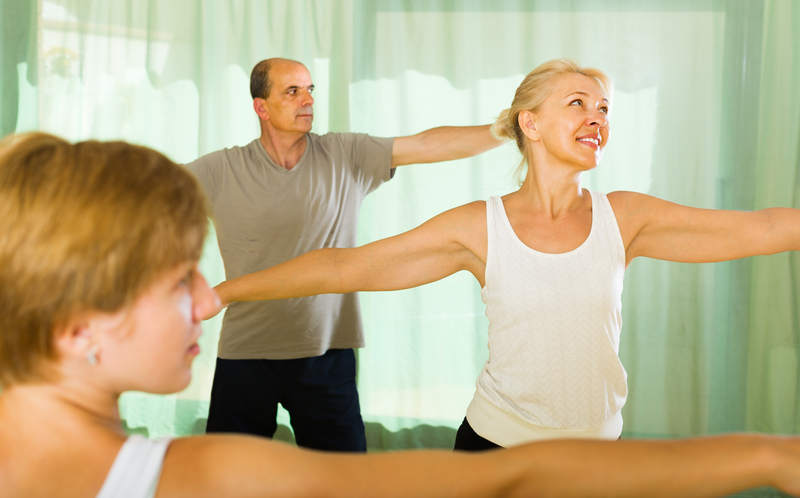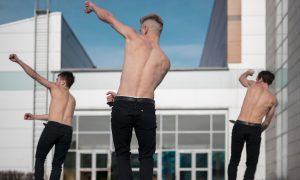April is Parkinson’s Disease Awareness Month. If you are not familiar with it, Parkinson’s disease is a disorder of the central nervous system that affects movement. It is often marked by tremor, muscular rigidity, and slow, imprecise movement. You might be wondering why this is important and what it has to do with the dance community. Movement is the core component of dance, and Parkinson’s disease is known to be a movement disorder. How do you treat a movement disorder? MOVEMENT! Oddly enough, less than two decades ago, dance was not necessarily the go-to treatment for Parkinson’s. Now, it is one of the most talked about forms of exercise, as well as an option for symptom management. How does movement and dance help?
#1. Assists in symptom management.
Research has shown that movement can help manage problems with gait, balance, tremors, flexibility and coordination. Improved mobility has been shown to decrease the risk of falling, as well as other complications from Parkinson’s disease. This often occurs because the brain is learning to use dopamine more efficiently.
#2. Promotes self-awareness and identity.
Every person has a different way of moving and certain affinities toward movement. It is those differences that promote a capacity for introspection and the ability to stand out as an individual. Muscle memory even has the ability to tap into memories stored in the brain. Movement has the ability to retain our memories and create new ones.
#3. Maintains a sense of control.
Connection to our breath, the most primitive form of movement, enables us to control our pulse rate, circulation and even our thoughts. This is so important for when we feel like things are out of our control or when our body is not functioning the way we would like; we have the power through our own breath to take back a sense of control.
#4. Builds psychological resilience.
Movement has the ability to actually increase our adaptability to stress and adversity. Reinforcing our own connection to the body empowers our psyche and encourages inner core strength. This core I’m referring to isn’t your abdominals but rather your identity. Connecting to the muscles in your chest, torso and pelvis tap into your belief system, identity formation and personality.
#5. Provides opportunities for social connections.
From early on in human existence, there is documentation of celebration and rejoicing through song and movement. Movement has the ability to connect us with others without verbal communication. We can join in someone’s experience just by witnessing and empathically embracing their body language.
#6. Gives people a voice.
Not only does movement and dance provide the opportunity for non-verbal communication and expression, but it may allow someone to find their voice. Through movement, we can reclaim our values and beliefs. We can speak for ourselves and voice concerns. Voice can be impacted by Parkinson’s disease. I have seen firsthand, people regain some vocal ability after participating in a dance or dance therapy regimen. It is as if claiming and owning your body and taking up space in the world allows you to be heard.
Why is this important, and how does this apply to you? Well it is always good to be educated about health conditions, especially ones that impact our movements. Furthermore, as a dance therapist and dancer, I have learned so much from this community. I want to share with you the 5 “H”s.
Hope. Working with individuals living with or impacted by Parkinson’s disease, I am constantly in awe of the hope that exists in the groups in spite of the sad reality that comes with this diagnosis. My clients are living their lives and continuing to find ways to be.
Hard work. Learning to move differently or accepting that you will not move the way you used to takes hard work. It is physically and emotionally challenging. It is hard work to show up for yourself in a way that says you are worthy of life no matter how different that life may be.
Humor. Not a session goes by where we don’t laugh. While some choose to make jokes or make light of their diagnosis, others find joy and laughter in finding new ways to communicate and “move” through the world.
Humility. I am humbled by how much I take movement for granted. I can walk away from the group on my own accord while others take their symptoms wherever they go. I am humbly reminded that movement should not be taken for granted and to appreciate that movement is not easy for everyone.
Honor. It is an honor to be a small part of someone’s journey, to watch them dance through their diagnosis. Every individual living with this disease is different, and while symptoms may be similar, they manifest and impact everyone in their own unique way.
Consider how else people are dancing through a diagnosis. Parkinson’s disease is merely my focus for the month of April, but there are millions of people around the world dancing through cancer, brain injury, mental illness, trauma and abuse. Dance is always possible, and it is always an option. It may just mean looking at it and connecting to it in a different way.
 By Erica Hornthal, LCPC, BC-DMT, Dance/Movement Therapist, Chicago Dance Therapy.
By Erica Hornthal, LCPC, BC-DMT, Dance/Movement Therapist, Chicago Dance Therapy.
Erica Hornthal is a licensed professional clinical counselor and board certified dance/movement therapist based in Chicago, IL. She received her MA in Dance/Movement Therapy and Counseling from Columbia College Chicago and her BS in Psychology from the University of Illinois Champaign-Urbana. Erica is the founder and CEO of Chicago Dance Therapy, the premier dance therapy and counseling practice in Chicago, IL. As a body-centered psychotherapist, Erica assists clients of all ages and abilities in harnessing the power of the mind-body connection to create greater awareness and understanding of emotional and mental health. For more, visit www.chicagodancetherapy.com.















